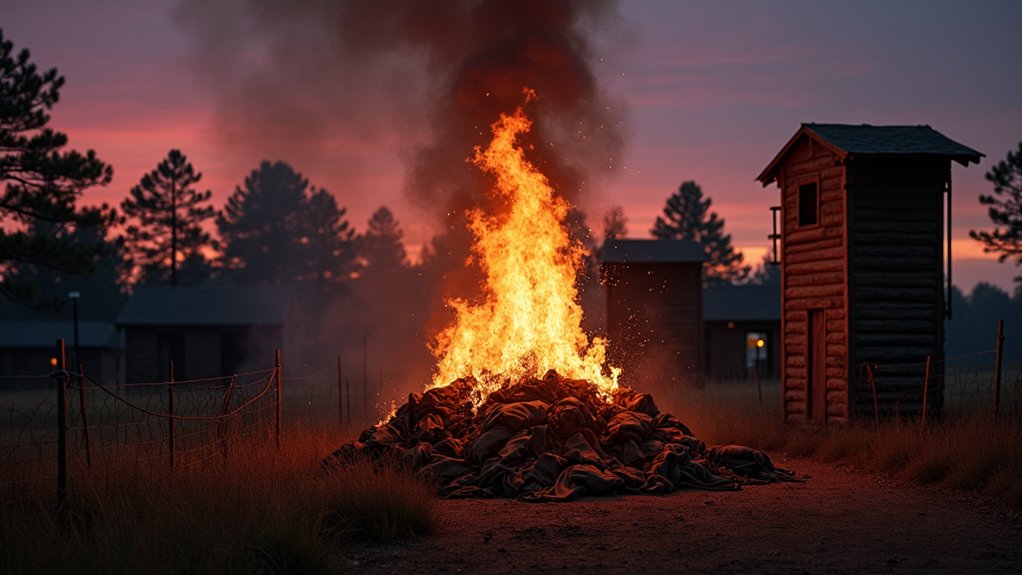While World War II raged across Europe, a peculiar slice of Germany took root in North Carolina. Camp Butner, sprawling across 40,000 acres, became home to thousands of German POWs captured after Rommel’s defeat in North Africa. By June 1944, it was North Carolina’s largest POW facility, housing 889 Germans who’d traded desert warfare for the American South.
Life at Camp Butner wasn’t exactly harsh. The locals even nicknamed it “Fritz Ritz” – and for good reason. These POWs had it pretty good: varied meals, recreation time, and even permission to marry their sweethearts back home via long-distance arrangements. Some lucky prisoners got transferred to other camps to reunite with relatives. Talk about a family-friendly prison. The camp’s activities were designed as part of a broader Nazi re-education program.
Life at Camp Butner was so comfortable for German POWs that locals dubbed it “Fritz Ritz” – more like a resort than a prison camp.
But beneath the surface, things weren’t all peaceful. Nazi loyalists seized control of the camp’s administration in 1943, building secret tunnels and underground rooms for clandestine meetings. They even managed to construct short-wave radios and publish an underground newspaper. One hidden room featured a massive portrait of Hitler – subtle, guys.
The Nazi influence turned deadly when Corporal Hugo Krauss was murdered in December 1943, suspected of being disloyal to the Reich. The camp also housed non-German anti-Nazi prisoners who were kept separate from other detainees.
The tide turned dramatically in 1945. When confronted with footage of concentration camps, 1,000 German POWs made their feelings crystal clear – they burned their Wehrmacht uniforms in a massive display of rejection. Seems those Nazi ideals weren’t so appealing anymore.
Of course, there’s always one guy who has to be different. Kurt Rossmeisl successfully escaped on August 4, 1945, managing to live under an alias in Chicago until 1959, when he finally turned himself in.
Meanwhile, Camp Butner was busy serving a new purpose, helping process returning American soldiers for demobilization.
Today, part of the former POW camp serves as the Federal Correctional Complex, Butner. The days of secret Nazi meetings and underground Hitler portraits are long gone, replaced by a very different kind of correctional facility. Times change, but some places just keep locking people up.





